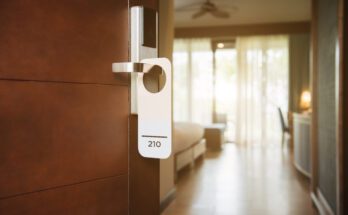DJ LeMahieu’s Opposite Approach Pays Dividends in Bronx
“DJ just continued to set the tone for us,” said manager Aaron Boone, a night after LeMahieu had gone 4-for-6 with a homer and five RBI. Here’s the first-inning shot:
LeMonster pic.twitter.com/yq2OZDz2vY
— New York Yankees (@Yankees) September 16, 2020
The home run was LeMahieu’s fifth to lead off his team’s half of a game, moving him into the major league lead:
| Player | Team | Leadoff HR |
|---|---|---|
| DJ LeMahieu | Yankees | 5 |
| Ian Happ | Cubs | 4 |
| Tim Anderson | White Sox | 3 |
| Ronald Acuna Jr. | Braves | 3 |
| Max Kepler | Twins | 3 |
| George Springer | Astros | 3 |
| Mookie Betts | Dodgers | 2 |
| Shin-Soo Choo | Rangers | 2 |
| Cesar Hernandez | Indians | 2 |
| Marcus Semien | Athletics | 2 |
| Fernando Tatis Jr. | Padres | 2 |
| Trea Turner | Nationals | 2 |
It was the 11th time LeMahieu has hit a leadoff homer in his two seasons as a Yankee; in that time, only Springer (15) has more, though until Wednesday, Acuna and Joc Pederson had as many in the same span.
Those guys are true sluggers, where LeMahieu is something of a Johnny-come-lately. In eight seasons prior to his arrival with the Yankees, the last seven of them in high-altitude Colorado, he had never hit more than 15 homers in a season. Last year, thanks in large part to his whole-field approach and ability to take advantage of Yankee Stadium’s short right field — not that a record-setting season for homers around the majors didn’t hurt — he hit 26. On Wednesday night, after Higashioka and Clint Frazier had joined him in taking Roarke over the wall, LeMahieu hit another, also to right field:
The DJ is playing deep cuts only tonight. pic.twitter.com/prmvalzvvU
— New York Yankees (@Yankees) September 17, 2020
Neither shot was what you’d call Ruthian; the first one, which left the bat at 97.4 mph, was hit an estimated 339 feet while the second, with an exit velocity of 98.2 mph, traveled an estimated 360 feet. Via Baseball Savant, the pair gave LeMahieu 18 opposite field homers, good for second in MLB since the start of 2019:
| Player | Team | Oppo HR | Avg Dist |
|---|---|---|---|
| Kyle Schwarber | Cubs | 19 | 386 |
| DJ LeMahieu | Yankees | 18 | 361 |
| Javier Baez | Cubs | 16 | 395 |
| Eloy Jimenez | White Sox | 16 | 372 |
| Franmil Reyes | Padres/Indians | 15 | 391 |
| Freddie Freeman | Braves | 15 | 391 |
| Christian Yelich | Brewers | 15 | 386 |
| Ronald Acuna Jr. | Braves | 14 | 396 |
| Juan Soto | Nationals | 14 | 391 |
| Bryce Harper | Phillies | 14 | 387 |
| Aaron Judge | Yankees | 14 | 373 |
| Trey Mancini | Orioles | 13 | 393 |
| Rafael Devers | Red Sox | 12 | 385 |
| Jesse Winker | Reds | 12 | 370 |
| Trevor Story | Rockies | 11 | 394 |
| Nelson Cruz | Twins | 11 | 380 |
| Manny Machado | Padres | 11 | 380 |
| Teoscar Hernandez | Blue Jays | 11 | 378 |
| Nick Castellanos | Tigers/Cubs/Reds | 11 | 376 |
| Josh Donaldson | Braves/Twins | 10 | 387 |
| Eugenio Suarez | Reds | 10 | 382 |
| J.D. Davis | Mets | 10 | 381 |
| J.T. Realmuto | Phillies | 10 | 381 |
| Roberto Perez | Indians | 10 | 379 |
As you can see if you sort by the far right column, LeMahieu has the shortest average distance on those homers of any of those players by nine feet. That’s mostly a product of Yankee Stadium, where he’s hit 15 of those long balls; his average of 362 feet for those is 36 fewer than Freeman, whose 12 oppo homers at home is the second-highest total.
Still, it’s no crime to take advantage of one’s home park; this just means that LeMahieu shouldn’t be counted upon to win next year’s Home Run Derby (let us hope there is one). And it’s yet another reminder that while he’s posted respectable power numbers in pinstripes, as former Rockies GM Dan O’Dowd said that he would when he signed, he’s hardly typical of today’s top hitters. As he’s made his two-year, $24 million dollar contract — one that was hardly greeted with enthusiasm from Yankees fans given his unimpressive home/road splits — pay off, first with last year’s career highs of 5.4 WAR and 136 wRC+, his performance has become the subject of fascination for this scribe. His big night, though eclipsed somewhat by Higashioka’s once-in-a-lifetime showing, coincided with what might be my only trip to the ballpark in 2020, affording me the opportunity to dig into DJ’s deeper cuts, so to speak.
Including his third-inning walk and sixth-inning double, LeMahieu is now batting .373/.421/.627. He’s neck-and-neck with the White Sox’s Tim Anderson (.374) for the batting title; Anderson beat him out last year, .335 to .327, preventing LeMahieu from becoming the first player to lead both leagues since the AL’s inception in 1901 (he led the NL at .348 in 2016). With his onslaught over the past two nights, he overtook Anthony Rendon (.416) for the AL on-base percentage lead, and is now sixth in the league in slugging percentage, and — wait for it – tops in wRC+ at 183.
What stands out about LeMahieu, aside from the fact that he’s exceeded expectations in the Bronx by a county mile given his unremarkable production in Colorado (an 87 wRC+ in 2018, with 94 the year before, and just one season above 100 in his entire career), is that in the age of the launch angle revolution, he’s slugging .627 while posting a 60.7% groundball rate; he entered Wednesday at 61.1%, the highest rate in the majors. Granted, his body of work in 2020 is still a relatively small sample (164 PA), but that makes him quite an outlier:

LeMahieu is that yellow dot in the upper right (Juan Soto, currently slugging .708 with a 52.0% groundball rate, is the red one). For the time that we have batted ball stats (2002 onward), he’s one of just 18 qualifiers with a groundball rate of 50% and a slugging percentage of .500 or better. That five of them are from this season suggests this is something that could come out in the wash given larger sample sizes, but LeMahieu is also one of two repeat customers, along with Brewers slugger Ryan Braun:
| Name | Team | Season | GB/FB | GB% | SLG |
|---|---|---|---|---|---|
| Juan Soto | Nationals | 2020 | 1.89 | 52.0% | .708 |
| DJ LeMahieu | Yankees | 2020 | 2.65 | 60.7% | .627 |
| Christian Yelich | Brewers | 2018 | 2.20 | 51.8% | .598 |
| Tim Anderson | White Sox | 2020 | 2.25 | 54.6% | .596 |
| Eloy Jimenez | White Sox | 2020 | 1.82 | 51.1% | .577 |
| Shawn Green | Dodgers | 2002 | 1.72 | 51.2% | .558 |
| Ryan Braun | Brewers | 2016 | 2.22 | 55.7% | .538 |
| Javier Baez | Cubs | 2019 | 1.59 | 50.3% | .531 |
| Robinson Cano | Yankees | 2006 | 1.84 | 51.9% | .525 |
| Torii Hunter | Twins | 2002 | 1.59 | 50.9% | .524 |
| David Peralta | Diamondbacks | 2015 | 1.96 | 52.1% | .522 |
| Tommy Pham | Cardinals | 2017 | 1.98 | 51.7% | .520 |
| DJ LeMahieu | Yankees | 2019 | 1.91 | 50.1% | .518 |
| David Peralta | Diamondbacks | 2018 | 1.73 | 50.7% | .516 |
| Jacque Jones | Twins | 2002 | 2.14 | 54.5% | .511 |
| Alex Verdugo | Red Sox | 2020 | 1.95 | 52.9% | .509 |
| Avisail Garcia | White Sox | 2017 | 1.90 | 52.2% | .506 |
| Ryan Braun | Brewers | 2019 | 1.66 | 50.4% | .505 |
| Starling Marte | Pirates | 2019 | 1.79 | 50.5% | .503 |
| Hunter Pence | Astros/Phillies | 2011 | 1.67 | 51.3% | .502 |
Such is LeMahieu’s groundball tendency that his average launch angle is just 1.7 degrees, the sixth-lowest of any qualified hitter in the Statcast era and the second-lowest this year (he and Jonathan Villar swapped places on Wednesday night). Only Soto (.708, 5.0 degrees), Yelich (.598, 5.0 degrees), and Braun (.538, 4.5 degrees) have anything close to that average launch angle while slugging above .500 in the Statcast era, but the gap is enough that LeMahieu is something of a unicorn.
This pinstriped unicorn certainly hits the ball hard, but by many measures, not as hard as last season, and in fact his Statcast numbers aren’t all that different from his later years in Colorado:
| Year | EV | Pct | LA | xwOBA | Pct | Barrel% | Pct | Hard-Hit% | Pct |
|---|---|---|---|---|---|---|---|---|---|
| 2017 | 91.7 | 77 | 5.9 | .401 | 69 | 1.9 | 7 | 41.4 | 81 |
| 2018 | 89.2 | 89 | 3.3 | .352 | 52 | 5.2 | 33 | 43.2 | 79 |
| 2019 | 91.9 | 92 | 6.5 | .384 | 90 | 7.5 | 46 | 48.5 | 94 |
| 2020 | 91.0 | 82 | 1.7 | .384 | 83 | 3.7 | 18 | 43.0 | 67 |
The thing about LeMahieu, where it has all come together, is that while he hits a metric ton of groundballs, he does so mainly to his pull side, while his fly balls are mostly to the opposite field.
| Year | Pull PA | GB/FB | Pull GB% | Pull FB% | Pull SLG | Oppo PA | GB/FB | Oppo GB% | Oppo FB% | Oppo SLG |
|---|---|---|---|---|---|---|---|---|---|---|
| 2015 | 98 | 9.88 | 81.4% | 8.3% | .327 | 180 | 1.32 | 35.2% | 26.7% | .568 |
| 2016 | 106 | 6.91 | 73.1% | 10.6% | .529 | 184 | 1.04 | 32.6% | 31.5% | .568 |
| 2017 | 114 | 8.30 | 74.8% | 9.0% | .432 | 202 | 1.15 | 35.3% | 30.9% | .576 |
| 2018 | 137 | 5.21 | 72.3% | 13.9% | .518 | 136 | 0.76 | 30.1% | 39.7% | .556 |
| 2019 | 144 | 8.69 | 78.5% | 9.0% | .583 | 174 | 0.62 | 25.6% | 41.3% | .719 |
| 2020 | 39 | 7.75 | 79.5% | 10.3% | .564 | 56 | 0.95 | 37.5% | 39.3% | .946 |
Last year, LeMahieu hit 13 fly balls to his pull side and 72 to his opposite side, while this year, the counts are four and 22. During the Statcast era, he’s maintained a ratio of about 5.5 oppo fly balls for every pulled one (except in 2018, when he was at 2.8), but now he’s doing so while spending half his time in a ballpark that’s 314 feet down the line instead of 350. That’s made all the difference.
LeMahieu, in the wake of Wednesday’s big game, refused to point to anything specific about a changed approach in moving from team to team. “It’s just [I’ve] matured as a hitter, a lot of failures and success in the past has made me the hitter I am right now,” he said.
That’s not exactly the most enlightening answer (a better reporter than I, under less 2020 Zoom-press-conference conditions, could have asked a follow-up to draw out a better answer), but I’m not sure I needed one given how loudly the data speaks. His performance sticks out in other ways in this day and age; his contact-centric ways — his 9.8% strikeout rate is the third-lowest among qualifiers, for example, ahead of only Tommy LaStella (4.2%) and Nolan Arenado (9.4%0) — are also remarkable, and his versatility, durability, and consistency have been a boon to the Yankees as they’ve navigated through injuries in the past two seasons (note that they went 2-7 during his recent absence due to a left thumb sprain). But understanding how his opposite-field approach is a better fit for Yankee Stadium than Coors is, to these eyes, what best explains the difference between the LeMahieu of Colorado, a high-average hitter whose production otherwise lagged, and the one of the Bronx, a hitter who’s become one of the league’s best.


